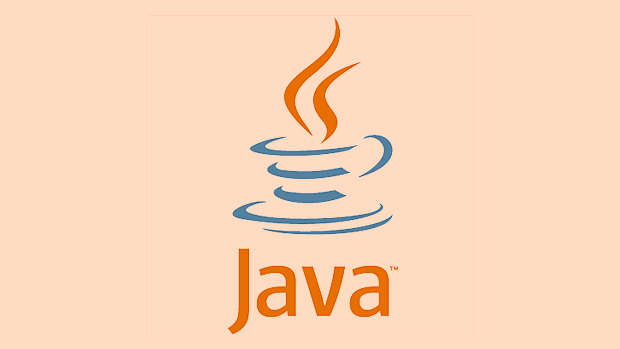What is the difference between fail-fast and fail-safe iterators in Java?
Jul 09, 2025 am 12:09 AMFail-fast iterators throw ConcurrentModificationException when structural changes occur during iteration, while fail-safe iterators operate on a snapshot and do not throw exceptions. 1. Fail-fast detects modifications via a counter and throws exceptions unless changes are made through the iterator’s remove method, as seen in ArrayList. 2. Fail-safe, like in CopyOnWriteArrayList, iterates over a copy, avoiding exceptions but potentially showing stale data. 3. Use fail-fast for single-threaded environments to catch bugs early, and fail-safe in multi-threaded contexts to prevent concurrency issues, keeping in mind memory and performance trade-offs.

In Java, the difference between fail-fast and fail-safe iterators mainly comes down to how they handle structural modifications during iteration—like adding or removing elements while looping through a collection.

Here’s a straightforward breakdown of what each one does and when it matters.

What Fail-Fast Iterators Do
Fail-fast iterators throw a ConcurrentModificationException if they detect that the underlying collection has been structurally modified after the iterator was created (except through the iterator's own remove method).
This behavior is common in collections from the java.util package like ArrayList, HashMap, and others.

How it works:
- Each iterator keeps a modification counter.
- If the collection is changed outside the iterator (e.g., by another thread or even in the same thread before the iteration completes), the counter changes.
- When a mismatch is detected, the exception is thrown immediately.
Example situation:
List<String> list = new ArrayList<>(Arrays.asList("a", "b", "c"));
for (String s : list) {
if (s.equals("b")) {
list.remove(s); // This will throw ConcurrentModificationException
}
}What to do instead:
- Use the iterator's own
remove()method if you need to delete elements during iteration. - Or switch to a concurrent collection if working with multiple threads.
What Fail-Safe Iterators Do
Fail-safe iterators don't throw exceptions if the collection is modified during iteration. They work on a copy of the original collection or data structure, so changes to the original don’t affect the iterator.
These are typically found in collections from java.util.concurrent or utilities like CopyOnWriteArrayList.
How it works:
- The iterator operates on a snapshot of the collection at the time the iterator was created.
- Modifications to the original collection won’t be visible to the iterator, and vice versa.
Example situation:
List<String> list = new CopyOnWriteArrayList<>(Arrays.asList("a", "b", "c"));
for (String s : list) {
if (s.equals("b")) {
list.remove(s); // No exception, but this won't affect the current iteration
}
}Important to note:
- You won’t get real-time updates from the collection.
- Memory and performance can be affected because copies are made.
When to Use Each Type
You’ll usually choose based on your use case and environment:
-
Use fail-fast when:
- You want bugs to surface early.
- You're working in single-threaded environments.
- You expect modifications to be rare during iteration.
-
Use fail-safe when:
- You’re dealing with multi-threaded code.
- You can tolerate stale data.
- You want to avoid exceptions due to concurrent modification.
Also keep in mind:
- Some concurrent collections still have weakly consistent iterators that may show partial changes.
- Always check documentation for specific behaviors.
That’s the core of the difference. It’s not too complicated once you see how each type responds to changes under the hood.
The above is the detailed content of What is the difference between fail-fast and fail-safe iterators in Java?. For more information, please follow other related articles on the PHP Chinese website!

Hot AI Tools

Undress AI Tool
Undress images for free

Undresser.AI Undress
AI-powered app for creating realistic nude photos

AI Clothes Remover
Online AI tool for removing clothes from photos.

Clothoff.io
AI clothes remover

Video Face Swap
Swap faces in any video effortlessly with our completely free AI face swap tool!

Hot Article

Hot Tools

Notepad++7.3.1
Easy-to-use and free code editor

SublimeText3 Chinese version
Chinese version, very easy to use

Zend Studio 13.0.1
Powerful PHP integrated development environment

Dreamweaver CS6
Visual web development tools

SublimeText3 Mac version
God-level code editing software (SublimeText3)

Hot Topics
 Difference between HashMap and Hashtable?
Jun 24, 2025 pm 09:41 PM
Difference between HashMap and Hashtable?
Jun 24, 2025 pm 09:41 PM
The difference between HashMap and Hashtable is mainly reflected in thread safety, null value support and performance. 1. In terms of thread safety, Hashtable is thread-safe, and its methods are mostly synchronous methods, while HashMap does not perform synchronization processing, which is not thread-safe; 2. In terms of null value support, HashMap allows one null key and multiple null values, while Hashtable does not allow null keys or values, otherwise a NullPointerException will be thrown; 3. In terms of performance, HashMap is more efficient because there is no synchronization mechanism, and Hashtable has a low locking performance for each operation. It is recommended to use ConcurrentHashMap instead.
 What are static methods in interfaces?
Jun 24, 2025 pm 10:57 PM
What are static methods in interfaces?
Jun 24, 2025 pm 10:57 PM
StaticmethodsininterfaceswereintroducedinJava8toallowutilityfunctionswithintheinterfaceitself.BeforeJava8,suchfunctionsrequiredseparatehelperclasses,leadingtodisorganizedcode.Now,staticmethodsprovidethreekeybenefits:1)theyenableutilitymethodsdirectly
 How does JIT compiler optimize code?
Jun 24, 2025 pm 10:45 PM
How does JIT compiler optimize code?
Jun 24, 2025 pm 10:45 PM
The JIT compiler optimizes code through four methods: method inline, hot spot detection and compilation, type speculation and devirtualization, and redundant operation elimination. 1. Method inline reduces call overhead and inserts frequently called small methods directly into the call; 2. Hot spot detection and high-frequency code execution and centrally optimize it to save resources; 3. Type speculation collects runtime type information to achieve devirtualization calls, improving efficiency; 4. Redundant operations eliminate useless calculations and inspections based on operational data deletion, enhancing performance.
 What is an instance initializer block?
Jun 25, 2025 pm 12:21 PM
What is an instance initializer block?
Jun 25, 2025 pm 12:21 PM
Instance initialization blocks are used in Java to run initialization logic when creating objects, which are executed before the constructor. It is suitable for scenarios where multiple constructors share initialization code, complex field initialization, or anonymous class initialization scenarios. Unlike static initialization blocks, it is executed every time it is instantiated, while static initialization blocks only run once when the class is loaded.
 What is the Factory pattern?
Jun 24, 2025 pm 11:29 PM
What is the Factory pattern?
Jun 24, 2025 pm 11:29 PM
Factory mode is used to encapsulate object creation logic, making the code more flexible, easy to maintain, and loosely coupled. The core answer is: by centrally managing object creation logic, hiding implementation details, and supporting the creation of multiple related objects. The specific description is as follows: the factory mode handes object creation to a special factory class or method for processing, avoiding the use of newClass() directly; it is suitable for scenarios where multiple types of related objects are created, creation logic may change, and implementation details need to be hidden; for example, in the payment processor, Stripe, PayPal and other instances are created through factories; its implementation includes the object returned by the factory class based on input parameters, and all objects realize a common interface; common variants include simple factories, factory methods and abstract factories, which are suitable for different complexities.
 What is the `final` keyword for variables?
Jun 24, 2025 pm 07:29 PM
What is the `final` keyword for variables?
Jun 24, 2025 pm 07:29 PM
InJava,thefinalkeywordpreventsavariable’svaluefrombeingchangedafterassignment,butitsbehaviordiffersforprimitivesandobjectreferences.Forprimitivevariables,finalmakesthevalueconstant,asinfinalintMAX_SPEED=100;wherereassignmentcausesanerror.Forobjectref
 Why do we need wrapper classes?
Jun 28, 2025 am 01:01 AM
Why do we need wrapper classes?
Jun 28, 2025 am 01:01 AM
Java uses wrapper classes because basic data types cannot directly participate in object-oriented operations, and object forms are often required in actual needs; 1. Collection classes can only store objects, such as Lists use automatic boxing to store numerical values; 2. Generics do not support basic types, and packaging classes must be used as type parameters; 3. Packaging classes can represent null values ??to distinguish unset or missing data; 4. Packaging classes provide practical methods such as string conversion to facilitate data parsing and processing, so in scenarios where these characteristics are needed, packaging classes are indispensable.
 What is type casting?
Jun 24, 2025 pm 11:09 PM
What is type casting?
Jun 24, 2025 pm 11:09 PM
There are two types of conversion: implicit and explicit. 1. Implicit conversion occurs automatically, such as converting int to double; 2. Explicit conversion requires manual operation, such as using (int)myDouble. A case where type conversion is required includes processing user input, mathematical operations, or passing different types of values ??between functions. Issues that need to be noted are: turning floating-point numbers into integers will truncate the fractional part, turning large types into small types may lead to data loss, and some languages ??do not allow direct conversion of specific types. A proper understanding of language conversion rules helps avoid errors.






